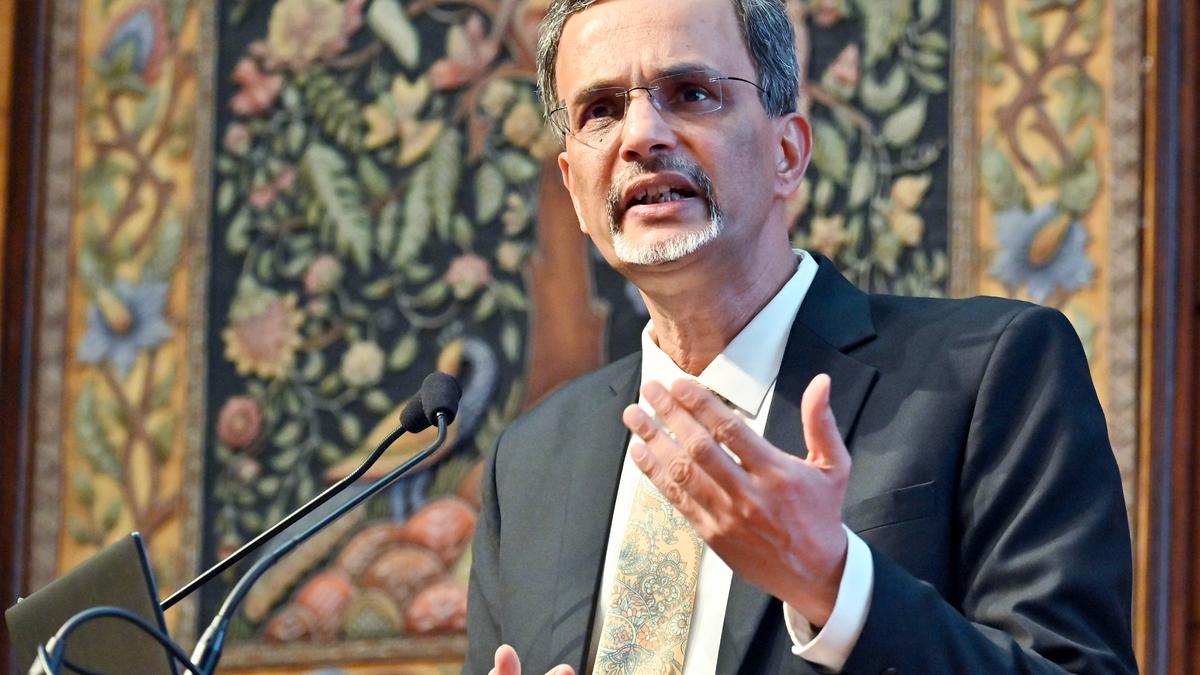
Chief Economic Advisor V. Anantha Nageswaran said that if the tariffs on India stayed on, there would be a drop in exports to the U.S. File
| Photo Credit: ANI
Chief Economic Adviser (CEA) V. Anantha Nageswaran on Thursday (September 18, 2025) said he expects that a solution to India’s tariff issues with the U.S. is likely to arrive in the next eight to 10 weeks.
The additional 25% tariff imposed by the U.S. on Indian products for the country’s purchases of Russian oil came into effect in August, bringing the total amount of levy imposed on New Delhi to 50%.
Speaking at an interactive session organised by Bharat Chamber of Commerce in Kolkata, Mr. Nageswaran said, “Underneath the surface, conversations are going on between the two governments. My hunch is that in the next eight to ten weeks, we will likely see a solution to the tariffs imposed by the U.S. on Indian goods.”
He said that if the tariffs stayed on, there would be a drop in exports to the U.S.
Terming India as an aspirational lower-middle-income economy, Mr. Nageswaran said real Gross Domestic Product (GDP) growth in the first quarter of the current financial year was 7.8%.
Post the Covid-19 pandemic, the Indian economy grew faster than many countries, he said.
On India’s economic growth
The growth in manufacturing, services and agriculture will contribute to economic progress in a great way in the next two years, Mr. Nageswaran said, adding that consumption and investments will continue to anchor growth for the country.
According to him, the debt-to-GDP ratio in India is good. With per USD of debt, the country generated more GDP than other countries, which shows efficient utilisation of capital in the economy.
He also said that rural demand remains resilient in the economy, and urban demand is gaining traction.
The recent relief in GST rates will give more disposable income in the hands of consumers, and urban consumption is likely to go up, the CEA said.
Also read: GDP growth in Q1 quickens to five-quarter high of 7.8%, buoyed by cross-sector strength
Credit to the MSME sector is rising while advances to the large industry are undergoing a structural change, he said, adding that in the present day, avenues of resource mobilisation are ample.
According to Mr. Nageswaran, the external sector of the economy remains resilient, despite the global headwinds. “Trade continues to be robust in the current financial year”, he said, adding that the foreign exchange reserves are healthy.
The current account deficit is benign and narrowed down to 0.2 per cent of the GDP in the first quarter of the 2025-26 fiscal, he said. “The rupee is depreciating against the U.S. dollar. Given the underlying strength of the economy, I am more inclined to believe that in the longer run, the rupee is likely to hold its value and become stronger,” the CEA said.
Delineating the policy priorities of the government, Mr. Nageswaran said that there is a continued emphasis on government capital expenditure, incentives to boost private investment and systemic deregulation. He said the supply of physical infrastructure, like ports and airports, has increased, which will not “overheat the economy when growth takes place”.
Referring to India’s trade with China, the CEA said that mostly capital and intermediate goods are imported from the neighbouring country. “The Indian private sector needs to do more on innovation and increase spending on R&D,” he said.
On the impact of artificial intelligence (AI), he said that it has been marginal so far. “Coding-level jobs will be under threat, but not bad from an employment perspective. People have to upskill themselves,” he said.
Published – September 18, 2025 04:36 pm IST

